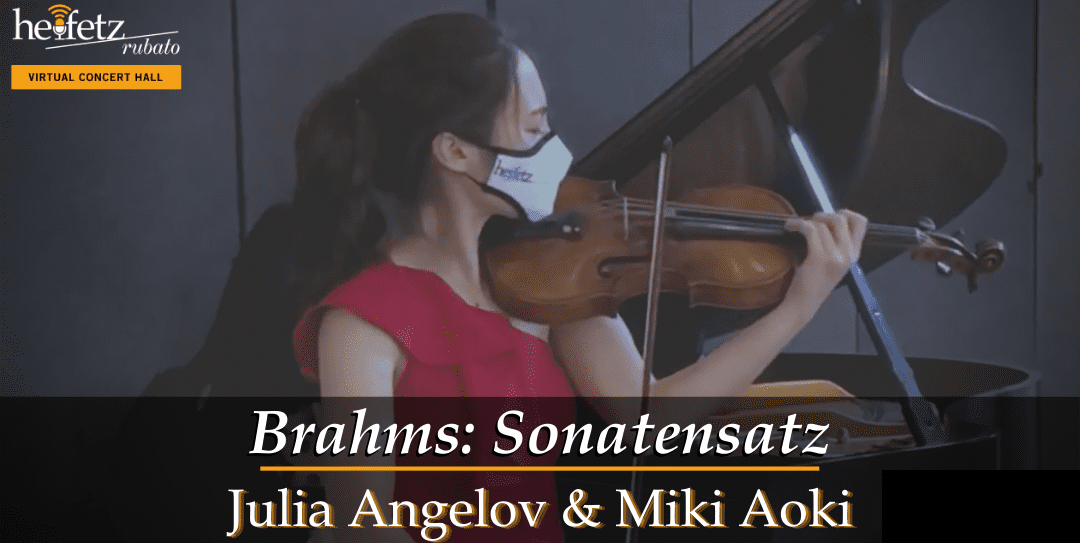A central purpose of the inaugural Heifetz Ensemble in Residence (HEIR) program is to offer our most outstanding alumni the professional and musical experiences that have been absent from their lives over the past year. The opportunity to work with and learn from both peers and mentors is an integral part of any artist’s development that can lead to lifelong friendships and creative partnerships.
Take, for example, the 20-year old Johannes Brahms, who toured as an accompanist to Hungarian violinist Eduard Reményi. That partnership led to an introduction in 1853 to Reményi’s countryman Joseph Joachim, already an internationally renowned violinist at the age of 22 (and the protégé of another famed precocious talent – Felix Mendelssohn). Joachim and Brahms would form a decades-long friendship and respect for one another, and the master violinist was central to some of the composer’s most vital works, including The Violin Concerto in D major, Op. 77, which was dedicated to and premiered by Joachim, who composed the cadenza for the piece himself in 1879.


Brahms in 1853


Adolph von Menzel’s painting of Joseph Joachim and Clara Schumann
Joachim in turn introduced the young German to Robert and Clara Schumann, who welcomed Brahms into their home and their artistic orbit, where they studied, performed, and lived together for several weeks (much like our own HEIR program). And so when Joachim was scheduled to perform in Düsseldorf in October 1853, they set about to write a piece in which they, along with Schumann’s pupil Albert Dietrich, would each compose a movement and task the violinist with guessing who was responsible for each section. Furthermore, each movement incorporates a theme with the the sequence of notes F (Fa), A (La) and E (Mi) as a nod to Joachim’s personal maxim, Frei, aber einsam (Free, but lonely); hence the title F-A_E Sonata.
Upon playing through the work with Clara Schumman at the piano, Joachim had little trouble identifying the author of each movement, and in particular the Scherzo (Sonatensatz) by Brahms, of which Orrin Howard writes:
“Brahms’ contribution could hardly be mistaken – the composer’s youthful (age 20) footprints are evident: the taut energy, beginning with the violin’s Beethovenesque three-short-and-a-long; the syncopations and cross-rhythms; the intermezzo-like lyricism of a trio that can’t resist brandishing some main section materials for the sake of unity; and a closing grandeur which seems to define the “young eagle’s” (Schumann’s appellation) soaring aspirations and his extravagant regard for Joachim.”
That energy and intensity of the Scherzo movement is captured here by violinist Julia Angelov, a member of the inaugural Heifetz Ensemble in Residence (HEIR) program, joined by Heifetz faculty pianist Miki Aoki. Recorded at the Great Hall at the Blackburn Inn and Conference Center, home base for the HEIR program in Staunton, VA.


